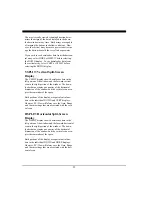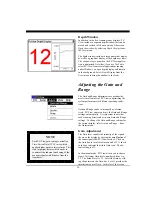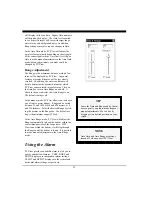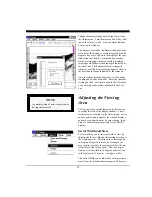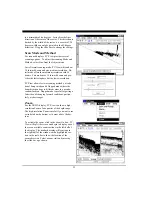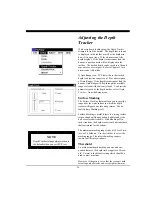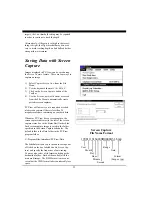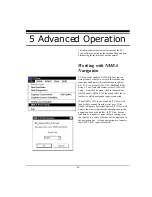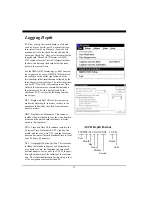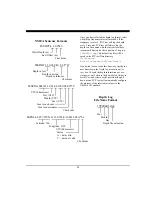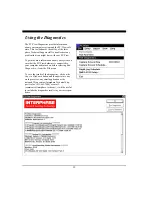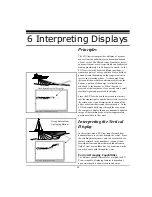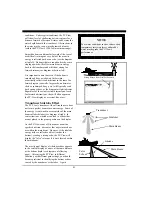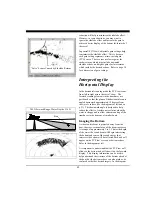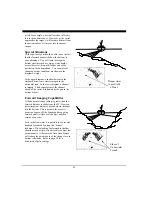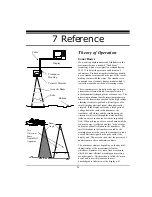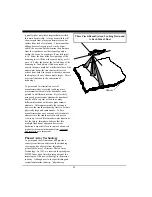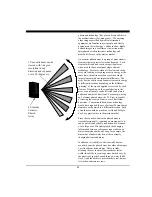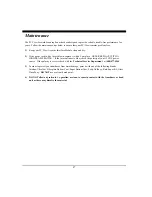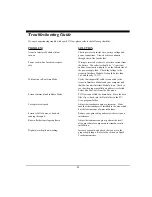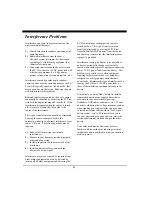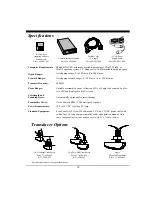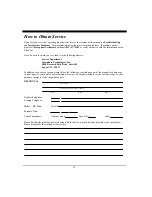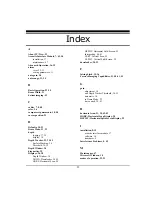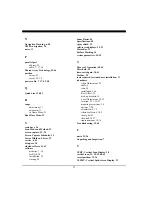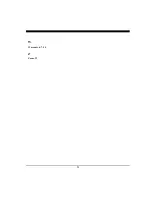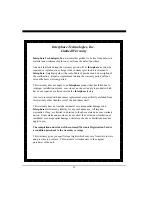
43
at left, for example, a bait ball or school of fish is
lost in the bottom echoes. However, as the vessel
approaches the target, it will become distinct from
the bottom echoes as it moves into the nearer
ranges.
Special Situations
With experience you should be able to use the fact
that the forward beam will show the bottom, to
your advantage. You will learn to recognize
bottom structure such as varying water depths
across the sector, drop-offs, ledges, and rocky
patches on the bottom ahead. Two examples of
changing bottom conditions are shown in the
diagrams at right.
In the upper diagram, a shallow bottom in the
starboard direction is clearly imaged in the
horizontal scan. In the lower diagram, a channel
is imaged. The deepest point of the channel
ahead of the vessel is indicated by the gap in the
bottom echoes.
Forward Imaging Capabilities
If the horizontal range setting is greater than the
forward distance to the bottom, the PC/View can
detect targets at distances beyond where the beam
hits the bottom. This is because the acoustic
beam can bounce off the bottom and keep going
forward until it strikes a solid object and then
returns as an echo.
Even in shallow water it is possible to see several
hundred feet ahead by using this “bounce”
technique. When looking far-forward in shallow
situations such as this, it is advisable to adjust the
gain manually. Otherwise the Auto Gain feature
will reduce the gain because of the strong close-in
bottom reflections. Refer to page 30 for a
discussion of gain settings.
Sides of
Underwater
Trench
Deeper water
to port (left)
of boat.
Summary of Contents for PC/View
Page 1: ...INTERPHASE INTERPHASE PC VIEW for Windows OPERATION MANUAL...
Page 54: ...54 W Warranty 6 7 55 Z Zoom 33...
Page 56: ...56...

